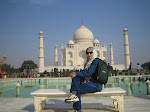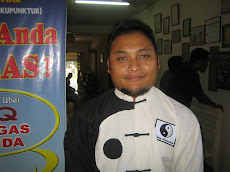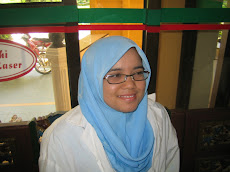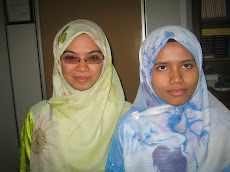From Edo period to before the World War II
Two western approaches (mechanist and vitalist theories) were brought into Japan through books. The concept of “Homoeopathy” was introduced to Japan in the Edo period.
The mechanistic approach to medicine was introduced as “Manbyo Chijun”, which was translated into Japanese from the Dutch version (1778) of “Institutiones Medicae in Usus Annuae Exercitaliones Domesticos” by Blue Harve (1708). On the other hand, a medical system based on vitalism, led by Hufeland (Christoph Wilhelm Hufelad : 1762~1836), was more easily embraced by Japanese doctors who were oriented toward humoral pathology, which had a long established background.
The “Pathologue” by Hufeland (1796) (the most important work in his early days), was published as “Pathogenesis” (1850), which was translated from the Dutch. The medicine of Hufeland seems to have been used widely in Japan. “Kazuisutika” (1911, Meiji 44) by Ogai Mori states: “The medicine, which my old man practices, is mainly based on Hufeland’s thought …” that is a medicine, being practiced by a hero’s father, which is modelled on Ogai’s father.
Homoeopathy was not settled in Japan, though the words ‘Hahnemann’ and ‘Homoeopathy’ were put into Chinese characters and it was partly introduced in the Edo period. There are two reasons to be considered. Firstly, homoeopathy was standing on a theory of vitalism, and that approach was too dogmatic in character. It seems that the concept of homoeopathy didn’t coincide with the Japanese sensitivity to pragmatism, which respects practices more than theories.
Secondly, Japanese medicine in those days was basically medicinal herbs, acupuncture and moxibustion, which methods had been developed to a very sophisticated art. After the Meiji period, there was an increased flow of medical information from Europe.
There was a company “Fukuinkoji”, that imported and sold homoeopathic remedies from Boerick Tafel’s in America, Showa 8 (1933), and their Tokyo branch was located in Meguro-ku. A book, called ‘Homoeopathic Medicines’ was published by the company. There was a manufacturer of homoeopathic remedies in Marugame in Kagawa in the early Showa period, and the prime minister at that time, Makoto Suzuki, wrote “There is no border for a good medicine.”
Japanese medicine had been strongly influenced by German medicine prior to World War?, but it was swayed by American conventional and pharmaceutical medicine after the World War?, when Japan was occupied by the United States.
After World War II
Just after World War II, Hiroshi Sakaguchi (Kyoto University Medical School graduate) had a strong interest in oriental medicine. He went to Germany to teach acupuncture and moxibustion on the invitation of Dr. Schmidt, who was studying in Japan. While Sakaguchi was teaching acupuncture and moxibustion, he became familiar with homoeopathy. Homeopathy was a therapeutic system different from both oriental and western medicine.
It was around the 200th year celebration of Hahnemann’s birth. Homoeopathy was not a subject of research in the University, but it was rooted firmly as an alternative medicine. Sakaguchi studied homoeopathy in a Stuttgart hospital and, after he returned to Japan, wrote “Homoeopathic Treatment”, based on his experiences. There is some doubt about whether the book captured the essence of homeopathy and it didn’t have much effect on medical practice in Japan.
In spite of writing the book, Sakaguchi rarely treated people with homeopathy. He said “The reason why I did not use homoeopathy was purely I did not need to do so.” With this statement he expressed his pride in the effectiveness of acupuncture, moxibustion and Chinese herbal medicine. There is some evidence that homoeopathic treatment was carried on by a woman doctor named Sakon.
In 1975, when Queen Elizabeth visited Japan, she asked to consult with a homoeopath, but the Foreign Ministry could not find a Japanese homeopath. She was eventually treated by a homoeopath from another country who happened to live in Japan.
Since the 1980s, some people in Japan who had been abroad, started using homoeopathy. This was due to the rising interest worldwide, in alternative medicines. Homoeopathy has never been introduced to Japan by the mass media, but rather was mentioned as a mysterious treatment by a few spiritual-type magazines in the 1990s. The lack of attention to homoeopathy almost seemed intentional, and homeopathy remained obscure until until Ms Torako Yui started her activity in Japan in 1996.
Ms Torako Yui remembers those days, “That time in Japan… If somebody could just turn a tap, water (knowledge of homeopathy) would start to flow and people could have benefited from it. But it was as if someone were guarding the tap, so it wouldn’t be found. Homoeopathy had been spread all over the world, and it seemed unnatural that it didn’t exist in Japan.
I felt strongly that I had to tell everybody that the tap existed here. In the beginning there were so many difficulties in introducing homoeopathy to the Japanese people, but the water began to flow and it has been become a big river now. It has finally reached a point where no one can stop it. I could not have done this without the support from the U.K. I’m really, really thankful to them.”
Modern times
The introduction and spread of homoeopathy since 1996 has been called a miracle, as it has been so rapid. The accomplishments of Torako Yui, as a pioneer, are viewed with awe. She had been practicing homoeopathy in London (1966), when she was asked to give a lecture on homoeopathy in Japan. That’s when her activity in Japan began. One after the other, she established the organizations that were necessary to ground homeopathy in Japan.
Among her accomplishments were the establishment of educational and professional organizations, in order to spread homoeopathy promptly and widely. She also focused on educating the public through lectures, so that people could learn to treat themselves at home. She provided homoeopathic remedies at low cost to make them accessible to people.
A list of her accomplishment includes:
Providing education in homoeopathy
The first Japanese homoeopathy college, the Japan Royal Academy of Homoeopathy (RAH) was established by Torako Yui in April 1997. The college aims at providing the highest standards of training. Below are the some of the eminent homeopaths who have taught RAH students so far:
Michel Odent, Farokh Master, David Needleman, Ian Watson, Didier Grandgeorge, Jan Scholten, Robin Murphy, Rosina Sonnenschmidt, John Morgan, David Howell, Raj Bains, Mario Boyadzhiev, Arthur Bailey, Martin Miles, Colin Griffith, Miranda Castro, Frans Vermeulen, Yubraj Sharma, S. K. Banerjea, Rudi Verspoor, Ewald Stöteler, David Lilley, George Dimitriadis, Trevor Gunn, Margaret Roy, Jacques Benveniste, Melissa Assilem, Robert Davidson, Jonathan Stallick, Myriam Shivadikar, Phil Wander, Sam Needleman, Andrew Lockie, Roger Dyson, Trevor Adams, Alize Timmerman, Jane Whitehead, Robert Duddell, Mike Bridger, Peter Crockett, H.E. van der Zee, Shaik Rahmathullah, Steve Smith, Elizabeth Adalian, John Hoare, Frederick Schroyens, Linda Gwillim, Jerome Whitney, Ellen Kramer, Rachel Roberts, Richard Kenchington, Geoff Johnson, Bob Wooler, Peter Morrell, Colin Lessell, Hilery Dorrian, Frederick Cole, William Nelson, Victor Sims, Karin Mont, and so on.
One of tutors we had invited to Japan, Rosina Sonnenschmidt, mentioned RAH in a German science journal “Raum & Zeit”.
Through these activities, the latest knowledge of homeopathy from around the world was brought to Japan and has boosted Japanese homoeopathy to world class level within a short time. The RAH developed a unique, undogmatic and free college spirit. A number of homoeopaths have visited Japan in the last ten years, apart from RAH invitation and this resulted in creating a significant intellectual exchange between Japan and overseas. In 2006, RAH established a main college in the U.K. and started to broadcast lectures from there to six other Japanese colleges (Sapporo, Tokyo, Nagoya, Osaka, Kyoto and Fukuoka) using a high technological TV conference system. Subsequently, the colleges started the animal homoeopathy course, as well as part-time and full-time courses. RAH has gained a high reputation as an innovative and pragmatic school, which included overseas lecturers.
In homoeopathy, the advancement of theoretical knowledge is highly respected. It can be obtained through learning homoeopathic principles, miasm theory and Materia Medica explained in the “Organon of Medicine”. Students should also learn about pathology, physiology and anatomy from homoeopathic a medical point of view, which information will be useful in practice. The policy of RAH is to choose a method most applicable to each patient and not to abide by a particular one. Our students shall not be biased to a certain treatment, but learn various approaches and be capable of selecting what is most suitable for the patient. They will study over one hundred cases with senior homoeopaths before their graduation, as we focus on practicality.
Due to Yui’s effort in researching practical cures, Japanese homoeopathy is highly developed in the area of applied homoeopathy for modern diseases such as allergy, developmental disorders (like autism and hyperkinesias), self immune disorders (like cancer and AIDS), mental illness, inner child and many other intractable diseases, as well as iatrogenic and drug–induced diseases and those produced by environmental toxins.
The academic international exchange was deepened by Yui’s presentation at the 2003 congress of the Homoeopathic Medical Association (HMA) in UK and the international conference in Dubai in 2007 on iatrogenic diseases.
On 1st April, 1998, Yui established the Japanese Homoeopathic Medical Association (JPHMA) in Japan, where homeopathy as a profession was unknown then, and who’s main purposes were to diffuse and develop homoeopathic medicine correctly, to form homoeopathic medical educational foundations as an academic body and to register, certify and advise homoeopaths as a professional body. JPHMA was literally the first organization for professional homeopaths in Japan. The activities of JPHMA include administering registration exams, education, trainings and professional insurance for homoeopaths, organizing annual academic conferences, publishing quarterly academic homoeopathy journals for its members, integrating and registering counseling clinics called homoeopathic centres, educational organizations for homoeopaths and a membership club called Homoeopathy Toranokokai for those working to diffuse homoeopathy, organizing seminars and charity functions, and presenting at events.
Yui attended the international conference in Dubai and the first meeting of International Council for Homeopathy (ICH) in Heidelberg as a Japanese representative.
As of May, 2008, seven hundred members are registered in JPHMA including students. Homoeopaths and patients who practiced homoeopathic treatment were covered by insurance from the summer of 2005, which allowed JPHMA to be admitted in ICH. The registration system of homoeopaths was altered from UK’s HMA to JPHMA's own one in 2006.
Since the first ten JPHMA homoeopaths were registered by HMA (with interpreters assistance, at the British Embassy in Japan in 2000), the number of JPHMA registered homoeopaths has risen to two hundreds ninety by 2007 and they will be expected to exceed four hundreds in 2008.
The nature of JPHMA is very open, and we accept anyone who passed the JPHMA exam as JPHMA registered homoeopaths to practice medicine in Japan, no matter whether they had learned classical or practical homoeopathy. The graduates of other homeopathic schools including overseas, and those who belonged to other homeopathic associations overseas can also be registered as members upon passing the JPHMA exam. There are actually cases of stuldents who did not graduate RAH, which is a JPHMA recognized college, who passed JPHMA exam and are practicing as JPHMA registered homeopaths.
JPHMA supports the idea that “after learning homoeopathy for a considerable period, graduates from recognized homeopathic schools are entitled to take strict exams, pass and be registered by authoritative and traditional organizations, if they have enough knowledge, skills and abilities as professional homeopaths”. Its policy is that a professional registered homoeopath should not necessarily have to be a doctor or a practitioners of conventional medicine to practice homeopathic treatment, as long as they were trained, tested and passed a exam by a authoritative and traditional organization.
In January 2000, the Japanese Physicians Society for Homeopathy (JPSH) was founded with a policy different from that of JPHMA. They left eligibility of homoeopaths only to qualified doctors of conventional medicine. JPSH was established by a conventional medical doctor, Ryoichi Obitsu, and led by medical doctors, dentists and vets. Their attitude differs from JPHMA in terms of the eligibility of professional homoeopaths who are not qualified as conventional medical doctors.
Although JPHMA and JPSH are different in their policies about the eligibility of homoeopaths, they are not opposed to each other. Once there was a rumor about conflict between homoeopaths who were medical doctors and those who were not, but no such situation existed. JPHMA admits the necessity of conventional medicine from its start, and that there are strong and weak points for both methods. Patients should be benefit fully by the methods complementing each other. JPHMA does suggest that patients have conventional medical treatment when necessary. The chairperson of JPSH, Ryoichi Obitsu, also recognizes the importance of alternative medicine, and the Japan Holistic Medical Society (JHMS) which he also chairs accept those who are not qualified as medical doctors, as its members.
Moreover, there are many JPHMA members who are conventional medical practitioners such as doctors, dentists and vets. JPHMA president, Yui, delivered lectures for JHMS, participated in medical conferences held by such organizations as Japan Society of Ningen Dock, Japan Mibyou System Association, Japan Academy of Midwifery and held seminars for health care professionals. One of JSH’s member doctors is actually a RAH graduate. The need for homoeopathic application has increased especially in such areas as preventive and alternative medicine, in area of developmental disorders such as autism and hyperkinesis and in area of obstinate diseases such as self immune disorders and iatrogenic diseases. In addition, there is a move to introduce lectures on homoeopathy at a conventional medical university. (In 2008, the annual academic conference for the tenth anniversary of JPHMA will be open to the public and homoeopaths from all over the nation will present their cases on the theme of “atopic diseases, autism, hyperkinesis, cancers-----homoeopathic approach in Japan, the country of obstinate diseases”. A panel discussion including conventional medical practitioners, will also be held during the conference.)
In 2002, George Vithoulkas started a four year correspondence school (twelve school days annually), IACH, and its first students graduated in 2006. There are growing numbers of students who take overseas homoeopathic correspondence courses or go abroad to study. Seminars, lectures and training sessions have been increased to meet the needs of the general public. There are concerns in Japan among homoeopaths about some new schools that will not qualify their graduates as registered homoeopaths. One school was chaired and lectures were given by people not qualified as homoeopaths. They did not give a qualification to their graduates and many students quit before graduation. As long as they call themselves a homoeopathic school, it is essential to keep a certain level quality in order to acquire status in Japan. Moreover, there are some professed homoeopaths with no qualification that are causing confusion among homoeopathy users. Some qualified homoeopaths do not register at homoeopathic organizations like JPHMA or JPSH and so they work without professional insurance, which may harm the reputation of homoeopathy. Homoeopathic organizations should work together to solve these problems to allow homoeopathy to be recognized as a profession, like acupuncture or judo taxis in the past.
JPHMA sets the hourly homoeopathic consultation fees of their registered homoeopaths between JPY8,000 and 15,000 from its inception. There once were homoeopaths who charged JPY150,000 per hour, so this controlled price range shall help patients gain access and lead to wider use of homoeopathy.
Yui has also been carrying out educational programs for the public on homoeopathic first aid and treatment for minor symptoms. She organized lecture/ meetings nation-wide under the catchphrase “Appreciate Your Symptoms”. She taught the fundamental philosophy of homoeopathy and many were moved by her words and her charisma to start using homoeopathy. Approximately one thousand people attended Yui’s lecture at Healing and Beauty Life Style Fare in Tokyo, 2008.
JPHMA approved Homoeopathy Users Club, Homoeopathy Toranokokai, started in 1998 and the number of members exceeded 20,000 in 2008. Its quarterly journal “Oasis” being a bridge between them. Homoeopathy Toranokokai was registered at The Prince of Wales’s Foundation for Integrated Health in 2004 .
The number of e-mails on homoeopathic experience sent to Homoeopathy Toranokokai’s website has been constantly rising which means more and more people began to treat homoeopathy as necessary in their lives. Homoeopathy also became popular in the area of health and sports and as part of participating in the 2008 theme event “Homoeopathy in Sports” of World Awareness Homeopathy Week, JPHMA teamed up with Keiko Masuda, lecturer at Kanagawa University of Human Services, and organized “body movement and homoeopathy” seminars which was attended by many people. (http://www.worldhomeopathy.org/index.html)
From 2008, JPHMA has started to practice homoeopathy for a professional football team, FC Ryukyu, which is led by general manager, Philippe Troussier, who was a previous manager for the Japanese national team.
The price of a remedy in Japan was once JPY15,000. A more affordable remedy was an essential factor for diffusion of homoeopathy, so Yui decided to establish the “Homoeopathy Japan Company” , enabling it from her own funds. (She resigned from running the company so as to focus on activities as a homoeopath and JPHMA’s educational campaign.) The company has affiliated technically with Helios Homoeopathy Ltd in UK, contracted as their Japanese sole agent and enabled to distribute a 30C remedy for JPY500. Various home care kits were developed so as to spread homoeopathy in private homes and that worked effectively. We also merchandise products like balancing remedies for inner body minerals, based on the theory of Schuessler’s tissue salts of Germany, sets of nosode remedies for preventative medicine and activating the immune system, detoxification remedies for drugs and vaccination, homoeopathy applied products and remedies to heal inner child and mental traumas. All these activities met the requirement of modern Japanese health needs and made homeopathic products accessible to the general public.
With growing popularity, a wide range of homoeopathic products (remedies and cosmetics) have become obtainable through various importing routes including private ones. Neal’s Yard Remedies in UK also have homoeopathic products, as well as essential oils and aromatherapy products. Many families who practice Waldorf education use homoeopathy as it is suggested by its founder, Rudolf Steiner. Many Europeans and Indians who reside in Japan, also use homeopathy. Homoeopathic principles were applied to develop energy instruments like Quantum Xrroid SCIO. Many homoeopaths use them and seminars are organized. In Europe, homoeopathic theory has started to apply in agriculture.
Back in 2000, “homoeopathy” was registered as a trademark for cosmetics by a major cosmetic company and “remedy” was registered by a health food maker, although internationally they were genericized names. Therefore, we registered “homoeopathy” for the food, literacy and education field and left the name free to use by anyone in order to genericize in Japan.
Circulation of Homoeopathic Books
Over one hundred homoeopathic books have been released in Japanese from various publishers making it easier for the Japanese to learn homeopathy. Homoeopathic Publishing Ltd. published more than fifty books including the sixth edition of “Organon of Medicine”, which was faithfully translated from the original German under Yui’s supervision. To add to this publishing rush, Sunchou Publishing released the Japanese translation of “Encyclopedia of Homeopathy” by Andrew Lockie under the supervision of the honorary professor of Meiji University, Shinichiro Otsuki, who is famous as an authority on Greek classics translation and study and also for the history of spagyrics. (Please refer to the book list attached in the end)
Shunsuke Fujii, the chief secretary of the liaison council for vaccination-induced victims, has translated and published “Vaccination and Immunization: Dangers, Delusions and Alternatives” by Leon Chaitow. This book, which described the hazards of vaccination, led to the complete victory in lawsuits for vaccination victims all over Japan. In March 2007, JPHMA organized the first international homoeopathy medical symposium on efficiency of vaccination. The lecturers were Shunsuke Fujii, Trevor Gunn, an English homoeopath, biochemist and author of “Comparing Natural Immunity with Vaccination” and Yui, who wrote “The Basic Guide to Immunization and Iatrogenic Diseases”.
Homoeopathy plays an important role in treating iatrogenic diseases and environmental illnesses that have become huge social problems in Japan. The classic “Vaccinosis and Its Cure” by the English doctor, J. Compton Burnett, was also published from Homoeopathic Publishing Ltd.
Subscribe to:
Post Comments (Atom)
















No comments:
Post a Comment